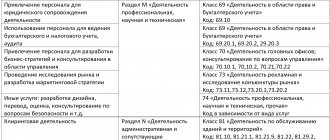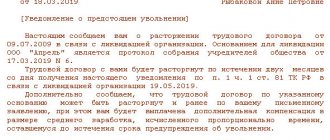Recruitment: basic concepts and terms
In order for the “personnel issue” in your company to be resolved effectively and competently, it is necessary to approach the matter of personnel selection consistently and professionally.
The phrase “cadres decide everything” belongs to I. Stalin: if we ignore the political aspect, one cannot help but appreciate the wisdom of this statement.
This expression became popularly loved and is widely used to this day.
As a recruiter with 5 years of experience, I can confirm: the well-being of the company, the atmosphere within the team, the development prospects of the company and much more depend on the personnel.
The company’s HR department (the term comes from the English “Human Resource” - “human resources”) is engaged in personnel selection, taking into account the long-term development prospects of the organization. Sometimes companies resort to the help of head hunters, which literally translates as “head hunter.”
This is the name given today to professional recruiting agents who “lure” already working employees from one company to another at its request, offering better working conditions.
For a successful business, it is necessary that employees are not only talented in their fields, but also able to work effectively in a team.
Finding qualified personnel is the first thing the head of a new organization has to do.
Recruiting employees is also relevant for an already existing company if there is suddenly a stagnation in work or prospects for expanding the field of activity arise.
To begin with, let me remind you of the meaning of basic terms and concepts.
This will help you understand the terms better.
Recruitment is a targeted effort to attract candidates to the company who have the qualities and skills necessary for the current and long-term needs of the organization. In other words, this is the search, testing and hiring of people who can and want to work, have the competencies and knowledge required by the employer and share the company’s values.
Applicants are persons applying for a vacant position.
A job description is a document regulating the range of responsibilities and rights of employees, as well as the nature of their official relationships with other employees.
Recruitment agencies are professional organizations that act as intermediaries between a company that needs to find employees and job seekers.
High-quality selection of employees:
- increases company profits;
- increases labor productivity;
- allows the company to develop.
An unprofessional approach to hiring employees is fraught with delays in completing work, a decrease in company income, and disruptions in business processes. Ultimately, you will have to return to the starting point - start searching and spend money and time recruiting new employees. System errors in the selection process - I have observed this in practice - significantly increase the company's costs.
Traditional personnel selection techniques
These methods are the most common ways to determine whether a candidate is suitable for a given position. There is no need to talk about their effectiveness - thousands of companies use just such approaches to hiring.
Summary.
HR managers of almost all companies want to see a candidate’s resume before he comes for an interview. A resume can tell you a lot: where the applicant studied, what professional experience he has, what awards he has earned, what human qualities he has, and, ultimately, whether he can write correctly. There is only one downside to a resume - the candidate compiles it at his own discretion, and some data may be unreliable or exaggerated. And he probably won’t talk about “black spots” in his professional career and life. Therefore, hiring decisions are rarely made based on resume analysis alone.
Interview.
An interview is a confrontation between the company manager and the applicant. A professional personnel officer will always be able to find out all the necessary information about a candidate in a short time and evaluate him as a potential employee. You can prepare for an interview, but a job applicant cannot always know 100% what questions will be asked. This is the advantage of interviews. Most often, applicants are asked questions about their professional background, interests and their vision of themselves in a given company. In some cases, we may talk about the health status of the applicant if this may affect the quality of the work he performs.
Managers can use different forms of interviews: someone conducts it in a strictly formal form (question and answer), someone prepares only sketches of questions, and in the process the conversation can turn into an almost friendly conversation with jokes and lyrical digressions.
Recently, Skype interviews have become popular. In terms of saving time, this is beneficial for both parties. Employers most often conduct Skype interviews when there are a large number of candidates, and they need to weed out those who are definitely not suitable, even based on a superficial analysis. With the rest, personal conversations are carried out in the future.
Questioning.
Before the interview, the candidate can be asked to fill out a questionnaire, the questions of which may be different. It usually begins with passport data: last name, first name, patronymic, date and place of birth. Questions about education, previous places of work, participation in various projects are also often encountered. In addition, the questionnaire may describe various life and work situations and offer several options for resolving them, from which the applicant must choose one (as he would do). Based on this data, the manager will already be able to draw some conclusions about the candidate.
Testing.
This method was one of the first to be used in personnel selection, then there was a decline in its popularity, and recently it has come back into fashion again. A test is a test of a candidate's abilities. What tests are there?
- intelligence tests.
Such tests are not tied to a specific profession, but help to identify the general level of intelligence and mental abilities of a person;
— tests for professional knowledge.
With their help, it is determined how well the candidate understands this specialization and is ready to perform the tasks assigned to this position. Such tests may recall the years of study at the university, when the test required the correct allocation of resources for the efficient operation of the enterprise or the balance of debits and credits;
- psychological tests.
The answers to such a test cannot be correct or incorrect, unlike the previous two types. The psychological test is aimed at identifying various personal qualities of a person - leadership abilities, ability to work in a team, temperament, ambitions, subconscious fears, hidden abilities, etc. The results of such testing can only be processed and deciphered by a psychologist.
5. Assessment centers.
Of the traditional methods, it is considered the most inaccurate. The assessment of candidates is carried out by special organizations, which invite them to participate in any business games, group discussions on a given topic, or perform special thinking exercises, as a result of which the professional and psychological qualities of the individual will be analyzed.
Types of recruitment sources
There are two types of recruitment sources: external and internal.
In the first case, personnel are selected from among the company’s own employees, in the second, through external resources. It is clear that internal sources are always limited, and it is impossible to completely solve personnel problems with their help.
The most common sources of hiring employees are external. Conventionally, they can be divided into 2 subtypes: budget and expensive.
Inexpensive sources include, for example, government employment services, contacts with universities and colleges. Expensive sources are professional recruitment agencies and media publications.
There are also completely free sources of personnel - Internet sites that publish vacancies and resumes of applicants, for example - HeadHunter, Job, SuperJob.
Even in every major city there are usually several such local sites. Even smaller cities often have their own city websites where you can post job openings.
In addition, organizations can always receive resumes directly from applicants without going through intermediaries.
Practice shows that even in conditions of crisis and unemployment, finding a qualified specialist in any field is not an easy task. Personally, I have repeatedly had to use expensive sources to find the best representatives of the most in-demand professions. However, for positions that do not require special knowledge, the cheapest methods of attracting personnel are usually used.
Types of external sources of personnel selection:
- By recommendation. Attracting candidates based on recommendations from relatives, friends and acquaintances of company employees. The oldest method, very effective and more suitable for small organizations. Statistics show that in organizations where the number does not exceed 50-60 people, 40% of new employees enter the service through acquaintances. This approach has a significant drawback - there is a risk of hiring an unqualified specialist.
- Direct work with potential employees. Working with “independent” candidates – people searching for work without contacting special services. Such candidates themselves call the company, send their resumes and inquire about vacancies. This is usually due to the firm's leading position in the market. Even if the organization does not currently need such a specialist, his data should be saved in order to be used if necessary.
- Advertising in the media. This is the most common way to attract applicants. Advertisements are given in newspapers, on Internet portals, on television, after which the candidates themselves call or come to the company. There are specialized publications and websites focused on a wide range of professions or specific industries. The use of online resources and printed publications is the most effective and popular tool for attracting candidates, however, in order for advertisements to hit the target, the requirements for applicants and their future job functions should be stated as accurately as possible.
- Contacts with universities. Many large corporations working for the future are focused on attracting graduates of educational institutions who do not have full-time practice. To this end, employers hold events at specialized universities or participate in job fairs. Since it is difficult to assess professional skills without work experience, personal characteristics, planning and analysis skills are assessed.
- Labor exchanges are state employment centers. A developed state is always interested in increasing the level of employment of citizens. For this purpose, special services are created that have their own databases and work with large companies. The method has a significant disadvantage: not all applicants apply to government agencies for the unemployed.
- Recruitment agencies. Over the past decades, recruiting has become an actively developing sector of the economy. Recruitment companies have constantly updated databases and independently search for candidates in accordance with the tasks of customers. Firms charge substantial remuneration for their work - sometimes up to 50% of the annual salary of the employee they find. There are companies specializing in mass recruitment or, conversely, engaged in “exclusive search” - the selection of executive employees.
The correct selection of external sources ensures success in recruiting competent employees who correspond to the profile of the company and its spirit.
The table shows comparative indicators of recruitment sources:
| № | Personnel search methods | Average time spent | Total time |
| 1 | Through the media | An advertisement in the newspaper is published after 5-7 days. For electronic media, the period is reduced to the day the announcement is submitted. It takes 5-7 days to process resumes from candidates and preliminary interviews with applicants | 6-14 days |
| 2 | Through friends and acquaintances | For a full survey of your social circle, 3-5 days are enough | 3-5 days |
| 3 | Among university graduates | Communication and interaction with employees of relevant university services (5-7 days). Collecting resumes with subsequent processing – another week | 2 weeks |
| 4 | Inside your own company | To analyze possible candidates from among the employee, 1-2 days are enough | 1-2 days |
| 5 | Through employment centers | Providing information to responsible employees of Employment Centers – 7 days. Processing of applicants’ resumes – 5-7 days | 2 weeks |
| 6 | Through free recruitment agencies | Establishing relationships with agency employees – 3 days. Data processing – 7 days | 10 days |
| 7 | Through recruiting companies | Providing information to company employees – 1 day. Search and selection of candidates for a position by a recruiting agency – 5-10 days | 1-2 weeks |
Basic ways to find candidates
While some specialists are intensively looking for work, grasping at any opportunity, others hold on to their place, even if they are not satisfied with the work. How to identify qualified specialists among the former and at the same time attract the latter - here are some simple and non-trivial ways.
Target vacancies with KPIs
After mass layoffs, applicants send resumes to any vacancies, hoping to receive at least some job offers. To attract relevant candidates, polish your job postings. Write down what the future employee will have to do and what he should be able to do at the start. Instead of general phrases like “diliency” and “punctuality,” tell them what time they need to be at work, at what pace they should complete projects, and what KPIs they should meet.
For example, “the ability to work for results” for a commercial director is better written as the task “Increase profits in six months by 10%.” And for the chief accountant, the boundaries of responsibility can be outlined as “timely settlements with suppliers, reducing the load due to tax optimization, etc.”
For example, let’s compare 2 vacancies for an accountant on work.ua:
The first vacancy describes in detail the work tasks and requirements, and the second, in addition to accountants, may well respond to office managers or sales managers.
Create and post a job opening for finance professionals on Finassessment for free using a template and a list of skills for different positions. Only targeted candidates will see your ad.
Post a vacancy on Finassessment
Lead magnets instead of vacancies
Even before the pandemic, recruiters duplicated vacancies on social networks, but this did not always provide targeted responses. As they write in the HR Director magazine, such posts were most often responded to by those who wanted to “wait out” difficult times. To gather a base of job seekers interested in a job, savvy recruiters use a marketing tool - lead magnets.
An example of a lead magnet from the site e.hr-director.ru
A lead magnet is an ad in which a company offers a gift to job seekers in exchange for contacts. It does not contain an offer like “Financial Director for 200,000 rubles”, working conditions and everything that is written in usual vacancies. This is a banner on a website or social network with a call to download a useful checklist, for example, “How to become a finder in six months” or “What an economist needs to know to get a job in 2021.” And below is a button for collecting contacts. Those who downloaded the checklist are included in the database and can become potential employees.
By the way, you can prepare illustrations for lead magnets or vacancies yourself using the Canva or Crello designers.
Search for passive candidates
The fear of being unemployed keeps many qualified specialists in low-paying or unloved jobs. You can find such passive candidates on professional platforms, forums or social networks. For example, good developers can be found on the programming site Stack Overflow, and financial specialists can be found in the largest communities Finance Club and Banking Careers on LinkedIn. In these groups you can post a vacancy, ask for recommendations, or immediately find candidates interested in the job.
Katerina Volskaya, CEO of HR company UniSkill
During the pandemic, we, like many companies, moved online. We managed to do this quite quickly, although previously this format of work seemed impossible to us. At UniSkill, the approaches to personnel search and selection have not changed - what we do has remained unchanged. But the tools we use during the pandemic have changed. We needed to upgrade the internal Applicant tracking system to make the team’s work even more convenient and accessible in a remote format.
For some time this brought its own inconveniences, like everything new in the organization. But it was worth it - we managed to increase the speed of evaluating resumes for suitability for the vacancy, and optimize the process of conducting and coordinating interviews. And since recruiting and working with clients are our key business processes, we were able to upgrade during the pandemic.
In addition, we noted the importance of communication within the team and communication with applicants. New questions arose at the interview stage regarding the stability of our partners’ businesses and their behavior towards employees during the quarantine period. Transparency and openness have become the basis for candidates, which plays an important role when accepting a job offer. It is these companies that have the opportunity to attract the best employees in the labor market.
Gold reserve
According to forecasts from the Finance Online research center, in 2021 companies will again turn to human resources. The advantage of the method is that in the reserve, the best and proven specialists who once worked in the company auditioned for the position. Or contacts of those recommended by colleagues and employees. During the time you haven't interacted with these candidates, they may have gained experience and may be looking for a job right now.
Peer recommendations and co-hiring
If the reserve is thin, you can ask for recommendations from colleagues in the professional community. For example, in the Facebook communities HR and recruiter. Without borders, HR-Land, We recommend verified candidates or Chat only for HR in telegram.
Or you can contact the staff. They are familiar with the company culture and can find relevant candidates. In gratitude, you can give employees an extra day off, give them training, or offer other bonuses from the company. Steve Jobs used the co-hiring method back in the day. The advantage of the approach is that attracted employees feel responsible to those who recommended them, which is why they work in the company more productively and longer.
Inbound recruiting
During a crisis, specialists, even having found a “warm place” for themselves, constantly monitor vacancies and company websites. If you have a career website, see if it's time to update it: add employee stories, videos from recent events, remove irrelevant vacancies, etc.
It is important to remain visible to potential candidates, generate targeted content on social networks, and conduct thematic events. To create a “reserve airfield” for yourself in case of mass recruitment. Inbound recruiting works especially well in the segment of selective white-collar workers, who respond poorly to direct job offers.
Basic methods of personnel search
Let's look at the classic and newfangled methods of finding employees. I’ll say right away that experienced HR specialists always combine methods of attracting personnel in their work.
In a number of situations, you can really “keep your head down” and use the recommendations of work colleagues who are looking for a position for their friend or relative. In other cases, a multi-day search for a narrow specialist through specialized recruitment agencies and other paid channels is required.
Let's look at the most effective search methods.
Method 1. Recruiting
Recruiting is a technique for selecting employees for common professions. Usually these are specialists at the so-called “line level” - sales agents, ordinary managers, executives, secretaries. Recruiting itself consists of drawing up a competent description of the vacancy and posting this description where potential applicants or websites engaged in personnel search will see it. The emphasis in this case is on people who are in the immediate process of searching for a job.
Method 2. Executive Search
Selection of management personnel - heads of departments, company directors, heads of regional divisions. This also includes the search for rare and unique specialists. Unlike recruiting, “exclusive search” involves active actions on the part of the interested company. Typically, this type of employee selection is carried out by specialized recruitment agencies.
Method 3. Headhunting
Literally, “headhunting.” A method of searching for or luring a specific specialist (a recognized master in his field) from one company to another. The methodology is based on the premise that top-level employees do not look for a job on their own and sometimes do not even think about changing one. The task of the “hunter” - an employee of a recruitment agency - is to interest the candidate with more favorable conditions or development prospects from a competing organization.
Method 4: Screening
Quick selection of candidates based on formal criteria. Psychological characteristics, motivation, and personality traits are not taken into account during screening: the main criterion for such a search for employees is speed. The screening period takes several days. The technique is used when recruiting secretaries, managers, and sales consultants.
Method 5. Preliminaring
Attracting candidates for positions through practical training of young specialists (graduates of specialized universities). The choice of a future employee presupposes that applicants meet certain psychological and personal qualities.
Preliminary work is aimed at the company's long-term business plan: it is the most promising way to create a strong and productive work community.
Advantages of internal and external recruitment methods
The main advantage when selecting employees from the personnel reserve that the organization has is that the successful candidate will not have to adapt to a new place and join the team. He has known everyone for a long time, and the only thing he needs is to get used to his new responsibilities and get to work. Such methods of personnel selection are mainly practiced in large enterprises and large corporations.
This is due to the fact that it is important for management to have trusted people, and not completely unfamiliar individuals from whom you can expect anything.
External recruitment methods are also very popular and are used mainly by companies for which it is important to expand their staff with new faces. It is really important to meet new people, rejuvenate the team with the help of young professionals, giving talented people the opportunity to successfully start their careers. The only disadvantage in this situation is the need for a new person to join the team and get used to the new place. For some people, this process is quite difficult and slow.
Modern methods of personnel selection are varied and have a very creative approach.
A candidate for a position can be tested, ranging from professionalism to stress resistance and endurance. Modern companies need strong-willed people and talented specialists.
The process and stages of searching for company employees
The employee selection process consists of several stages that candidates for a position must go through. At each stage, some applicants are eliminated or they themselves refuse the vacancy, taking advantage of other offers or for other reasons.
Now we will look at the main stages of selection.
Stage 1. Preliminary conversation
The conversation is carried out using various methods. For some positions, it is preferable for the candidate to appear in person at the potential job site; in other cases, a telephone conversation with a representative of the personnel department is sufficient. The main goal of the preliminary conversation is to assess the applicant’s level of preparation, his communication skills, and basic personal qualities.
But here it should be remembered that only at the level of visual communication can one get the most accurate idea of the personality of the job applicant. Therefore, now more and more often I conduct preliminary conversations via Skype.
Stage 2. Interview
The extended interview is conducted directly by the HR employee. During the conversation, it is important to obtain detailed information about the candidate and provide him with the opportunity to learn more about his future job responsibilities and the corporate culture of the environment where he will work.
Please note that at this stage it is very important not to make one mistake. You cannot attach importance to personal sympathy for a candidate for a position. You may like a person externally, his behavior and manners are close to you, and you also have common interests in life. Under the influence of emotions and feelings, you are without a doubt sure that a better candidate simply cannot be found and he, like no one else, will “fit” into the team in the best way. And therefore there is no point in “torturing” him and asking tricky questions.
It is necessary to conduct a full testing of a potential employee, and if on important technical points he does not meet the established requirements, then feel free to refuse him employment.
There are several types of interviews:
- Biographical , during which the applicant’s past experience and various aspects of his professional qualities are revealed;
- Situational : the applicant is asked to solve practical situations in order to determine his analytical abilities and other qualities;
- Structured - the conversation is conducted according to a pre-compiled list of points;
- Stress testing – is carried out with the aim of testing the applicant’s resistance to stress and his ability to adequately behave in provocative and unusual situations.
Stage 3. Professional testing
Conducting tests and trials to obtain information about the professional skills and abilities of the future employee. The test results will allow you to evaluate the candidate’s current and potential capabilities and form an opinion about his work style.
It is important to ensure that professional testing issues are relevant and comply with legal requirements.
Step 4: Check your track record
To get a more complete picture of the employee, it is worth talking with his colleagues at his previous place of work. Many people have a bad “professional history”, although the reason for dismissal at work is “on their own”.
Therefore, if possible, it would be good to talk with the applicant’s immediate supervisor to find out the reasons for the employee leaving his previous job, this will improve the quality of personnel selection. It would be a good idea to familiarize yourself with the recommendations, characteristics, incentives and other points of the track record.
Stage 5. Decision making
Based on the results of comparing candidates, the one who best meets the professional requirements and fits into the team is determined. When the decision to enroll has been made, the candidate is informed of this either orally or in writing. The applicant must be thoroughly familiar with the nature of the upcoming activity, informed about working hours, vacations, days off, rules for calculating salaries and bonuses.
Step 6. Filling out the application form
Candidates who have successfully completed the first and second levels fill out an application, questionnaire and sign an employment contract. The number of points in the questionnaire should be minimal: information that clarifies the applicant’s performance and his main qualities is important. The information provided relates to the candidate’s past work, professional skills, and mindset.
Below you can download samples of these three documents relevant for 2016.
Job application (doc, 39 Kb)
Employee questionnaire (doc, 71 Kb)
Employment contract (docx, 20 Kb)
This is followed by the official assumption of office. Typically, this term refers to the first working day of a new employee, during which he directly becomes familiar with the procedures and rules of work and begins his job duties.
Non-traditional recruitment technologies
Non-traditional personnel selection methods are becoming increasingly relevant. I've compiled a list of the most effective non-traditional ways to hire employees:
- Stressful (or shock) interview. The point of such a conversation is to determine the candidate’s resistance to stress. During such an interview, various techniques are used, the purpose of which is to unbalance the interlocutor. For example, the person responsible for the conversation is, to begin with, late for the meeting - by 20-30 minutes or even more. Or you can be dismissive of the candidate’s titles, merits and academic degrees (“MSU is not an authority for us - our cleaning lady graduated from MSU”).
- Brainteaser interview. Applicants need to answer some intricate or tricky question or solve a complex logic puzzle within a certain time. Typically, such methods are used when selecting creatives, marketers, and programmers.
- Use of irritating factors. Such factors are: bright light in the eyes, like during an interrogation in the NKVD, indecent questions, a chair that is too high. The subject can be seated in the center of a circle, around the circumference of which are representatives of the employer.
- Personnel selection based on physiognomy. It involves determining a person’s character by his appearance and socionics.
Non-traditional methods allow you to assess the flexibility of a candidate’s thinking, test his intelligence, evaluate his creativity, and finally, test his ability to work under pressure, which is important in a competitive business environment. In some large corporations (in particular, at Microsoft), stress interviews are used mandatory and en masse.
Testing of professional qualities
To test the true professionalism of an applicant for an important position, other personnel selection methods are also used. For example, a person came to apply for a position as a translator; he has little experience, but he claims that he knows his job very well. You can test his knowledge with one extraordinary method. During the interview, he is informed that he is indeed a good fit for them and they would like to hire him right away. Then they report that a delegation from foreign partners suddenly came to them, and since the old translator is no longer working, and they have not yet managed to find a new one, they offer you to act in his role.
Of course, you can get confused here, but a real professional will go to the end and will definitely agree, and someone who is incompetent will immediately be exposed. Therefore, before writing lies on your resume, you need to think carefully, because the truth will definitely come to the surface. It is non-traditional methods of personnel selection that help the applicant fully and most adequately evaluate the candidate.
To summarize, some methods for assessing candidates can be indicated. These include: personnel assessment centers, professional aptitude tests, tests to assess general abilities, such as memory, thinking, attention, etc. In addition, these can be biographical tests (collecting information about the family), tests to assess personal qualities, interviews (includes questions about work experience, level of knowledge and the presence of professional qualities). In addition, letters of recommendation from previous employers are very often used (a kind of characteristic of a person both personally and professionally), as well as the so-called non-standard methods discussed above.
Personnel decides everything!
Recruitment is a key element in the activities of the personnel management service.
The famous expression of I.V. Stalin, mentioned above, in practice is adopted not only by personnel officers, but also by managers, they understand that the effectiveness of business and the stable operation of the company depend on the quality of people.
Forming a strong team is the most profitable and promising investment for any company: saving on personnel issues is short-sighted and impractical.
The exception is situations when people can be hired from the outside, for example using personnel outsourcing.
When selecting personnel, you should pay special attention to the selection of tools and methods, not forgetting the latest achievements of scientific progress.
In many ways, the technique for selecting employees depends, of course, on the level of the company and its budget, but with a competent and creative approach to personnel selection, even small opportunities will allow you to select a knowledgeable and qualified specialist for a vacant position.







